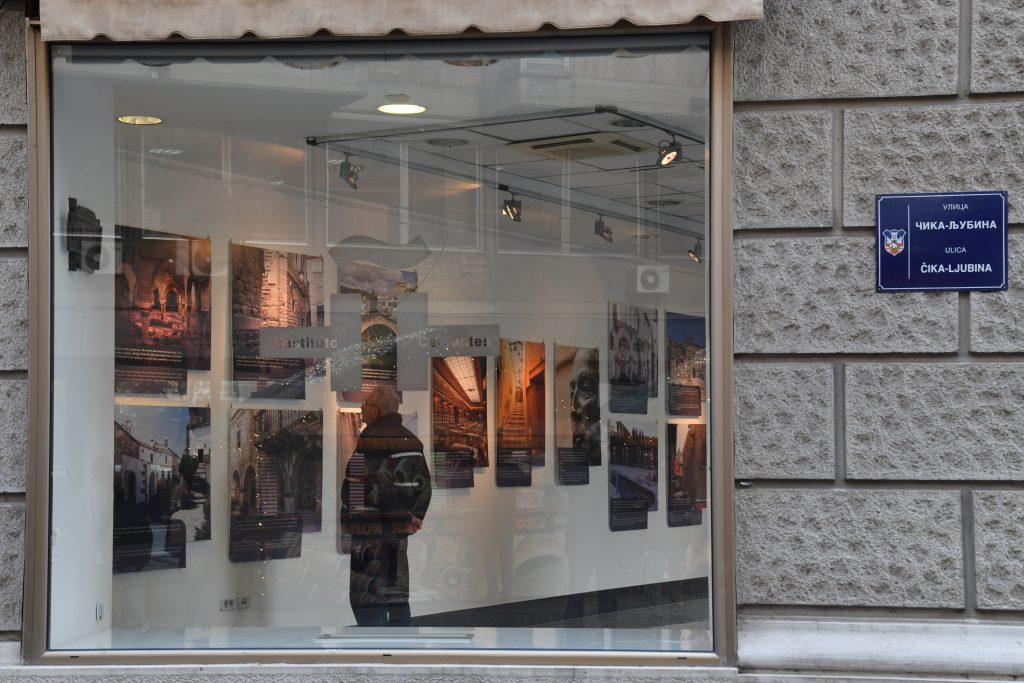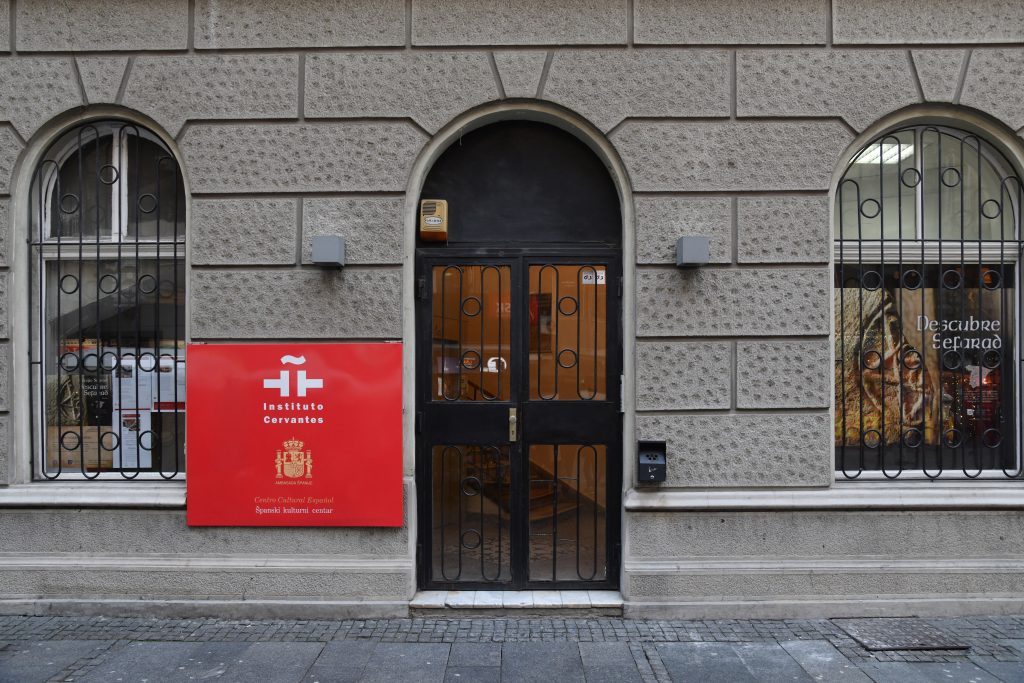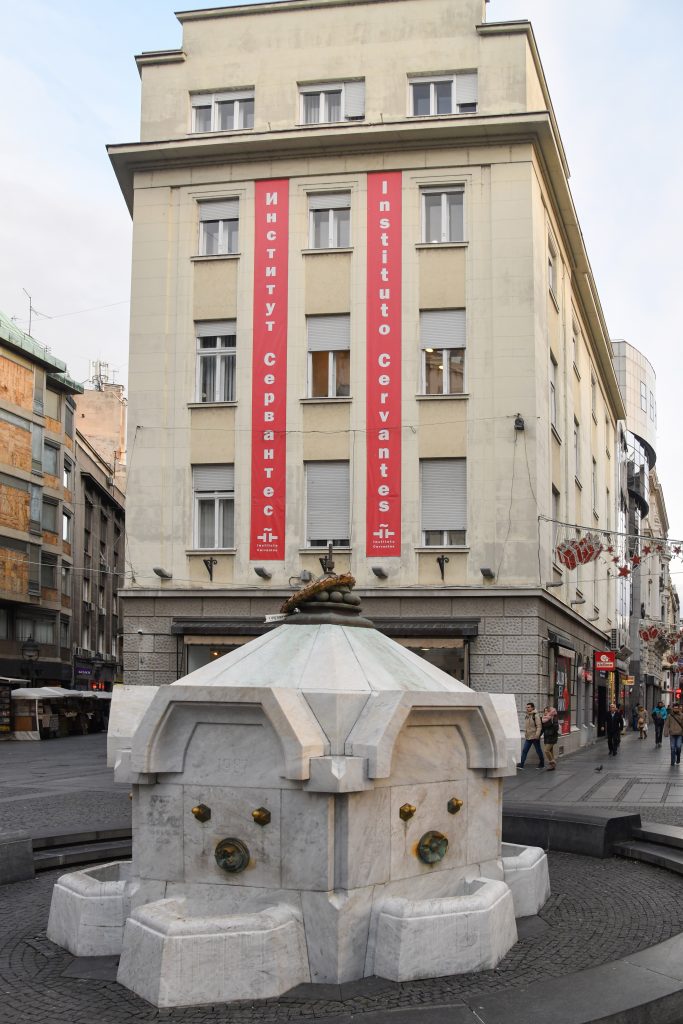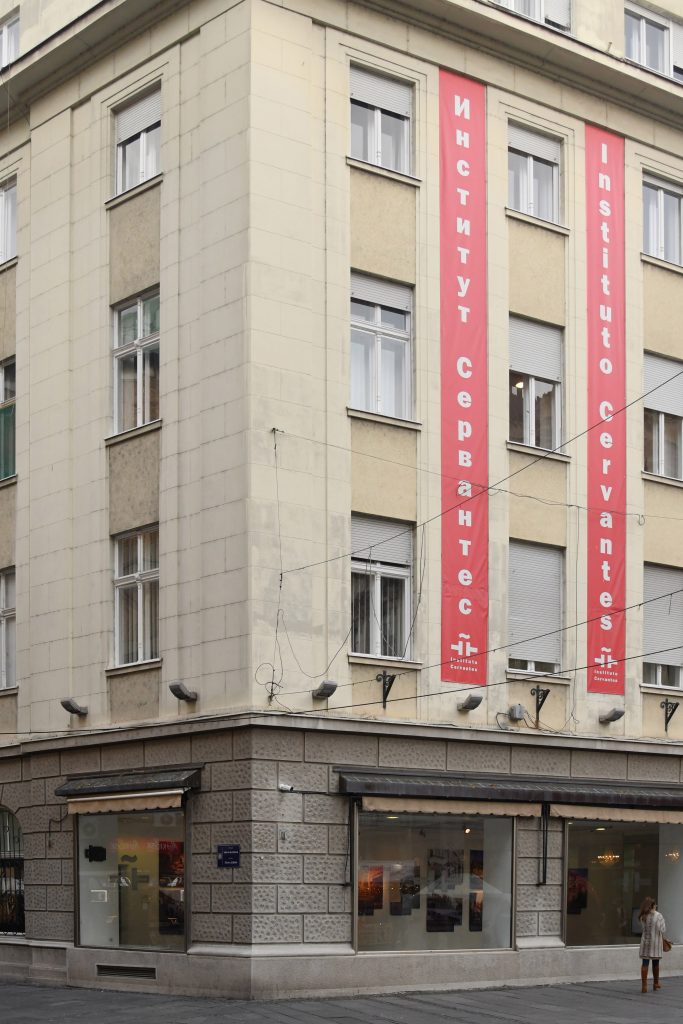NAŠ BLOG
CERVANTES AS A SYMBOL OF CULTURAL EXCHANGE
REPUBLIC OF SERBIA AND THE KINGDOM OF SPAIN
Although it took a great armed force for the Spaniards to conquer South America, only one horseman was enough to win the affection of Serbia – Don Quixote. Global fame which this work of Cervantes gained in the second half of the 18th century took over the intellectuals of Serbia too. In 1784, Dositej Obradovic wrote in his “Advice of Common Sense” (orig. Sovjeti zdravago razuma) that “the minds of children would enlighten more if Don Quixote were translated into their language”. The founder of Serbian drama, Jovan Sterija Popovic, noted: “Whoever read Don Quixote, I know he knows it well, and whoever has not read it, he should be ashamed, and Serbs should be ashamed because they do not have it in their language.”

History of bilateral relations
A century later, more intensive contacts at the diplomatic level began to develop. The representative of Serbia in Paris attended the ceremony held upon the occasion of the visit of the Spanish Queen Isabella, where he received congratulations for the proclamation of Serbia as kingdom.
This act was followed by awarding the Order of Carlos III by the Spanish King Alfonso XII to the Serbian King Milan Obrenovic. In May 1885, Serbian King Milan visited Queen Isabella. In July 1899, Serbian King Aleksandar Obrenovic awarded the Order of Saint Sava to the Secretary in the Spanish Ministry of Foreign Affairs Manuel Walls y Marino.
The first concrete diplomatic moves were initiated by Spain, which appointed Manuel Multedo y Cortina as its ambassador in Bucharest and as the ambassador in Belgrade on non-residential basis in February 1910.
On the eve of the First World War, in 1911, Arturo de Sola was appointed Spanish military envoy in Belgrade, and Alejandro de Lacour became the Serbian honorary consul in Barcelona. In one of his letters to the Ministry of Foreign Affairs of the Kingdom of Serbia, Alejandro de Lacour wrote in 1914 that the news of the Serbian army’s victories in defending independence in the First World War and the desire of the writer Àngela Graupera to come to Serbia as a volunteer nurse resounded strongly in Spain. Àngela Graupera later published memoirs in which she described her engagement in Serbia.
The process of establishing diplomatic relations between our two countries began in 1916, when the government of the Kingdom of Serbia was exiled to Corfu. At the very beginning of the war, in 1914, the Embassy of the Kingdom of Spain in Vienna took over the protection of Serbian citizens in Austria-Hungary. The appointment of Dragomir Jankovic as Serbian ambassador in Madrid in October 1916 and handing over his credentials to the Spanish King Alfonso XIII on February 7, 1917 meant the official establishment of diplomatic relations between the Kingdom of Spain and the Kingdom of Serbia.
The importance of the development of bilateral relations with Spain could be anticipated based on the fact that the famous writer and diplomat Jovan Ducic served in Madrid in the period from 1919 to 1922, and that our Nobel Prize winner Ivo Andric stayed in the Spanish capital in 1928 and 1929.
In this spirit and at the highest official level, the centuries-old history of cooperation between the two countries has begun. Numerous cultural, economic and political meetings and events in 2017 marked the centenary of bilateral relations between Serbia and Spain.
Spain is among several NATO and EU members which have not recognized the independence of Kosovo. This country voted against Kosovo’s admission to UNESCO in 2015.

Spain in the ordinary life of Serbia
In the everyday life of Serbian citizens, Spain is most present today in sports and culture.
Apart from the matches of Spanish football clubs, the duels of national heroes Novak Djokovic and Rafael Nadal, recorded as the longest rivals in the history of tennis (since 1968 in the Open era), are followed with great attention in Serbia. It is interesting to note that they are the only players who have played all four Grand Slam finals in a row in individual competition.

Relations between Spain and Serbia in the cultural and educational area are extraordinary. Spanish writers and artists participate in numerous programs at festivals and cultural events in Serbia and they are often supported by various Spanish institutions. The Serbs are traditionally very interested in learning Spanish.
Cervantes Institute in Belgrade is one of the institutions which significantly supports the activities of the Spanish Embassy in this area.
Cervantes Institute and Dipos
The Cervantes Institute in Belgrade was officially opened in December 2004. The goal of the Institute is to integrate into the cultural and social life of Belgrade and Serbia through its cultural and academic activities, as well as the offer of the ” José Hierro” library fund.
The Cervantes Institute is located in the pedestrian zone in the city center, in no. 19 Cika Ljubina Street. The building in which this cultural and historical monument of Belgrade is located is a part of the portfolio managed by Property and rental company Dipos Belgrade.

With our daily activities aimed at providing uninterrupted work for this Institute, we continue the tradition of improving cultural exchange and cooperation, which, as mentioned at the very beginning, in the case of Serbia and Spain preceded the official diplomatic relations.











 2018
2018